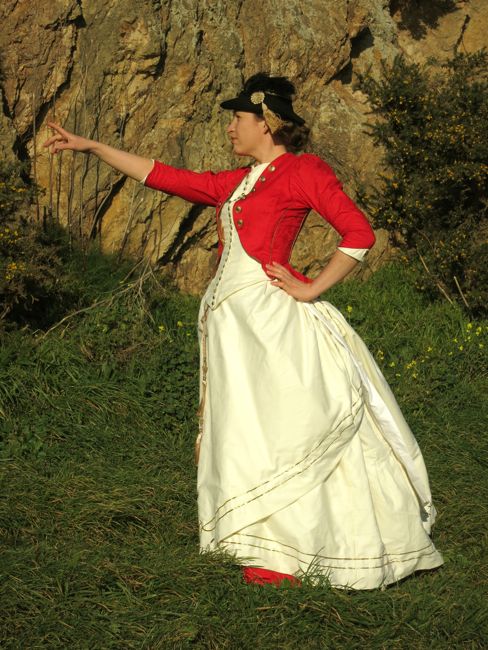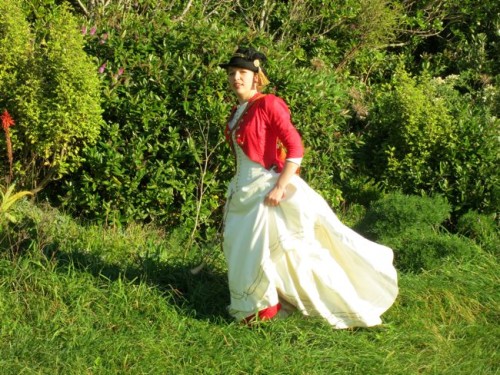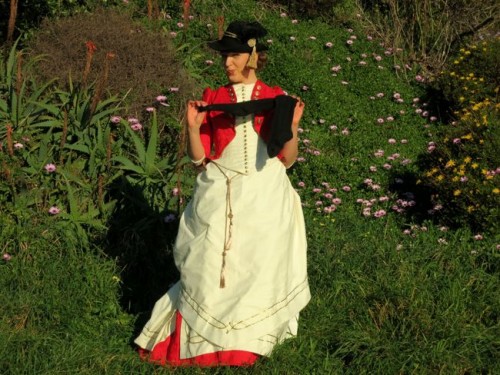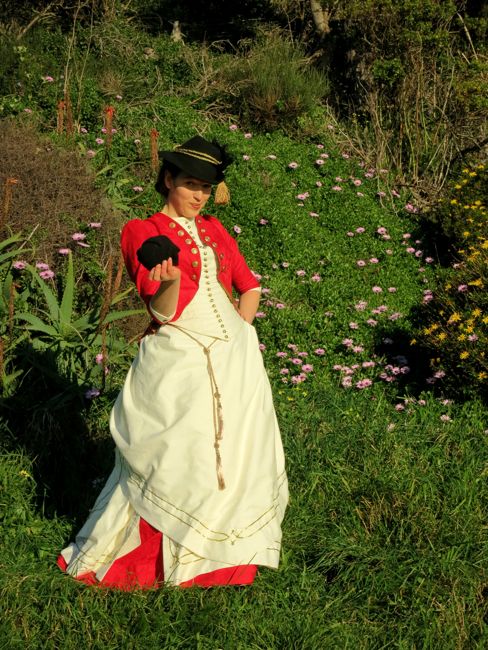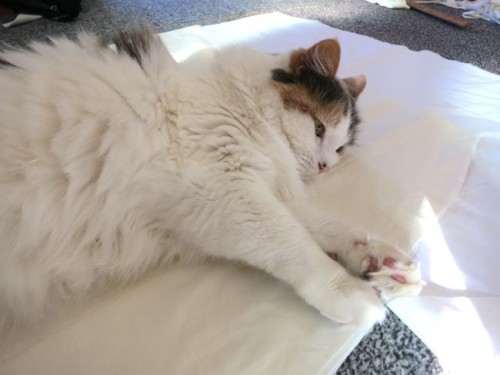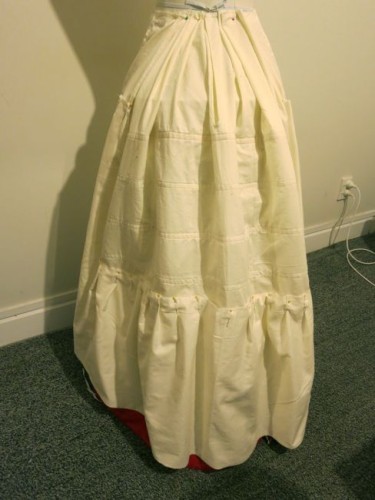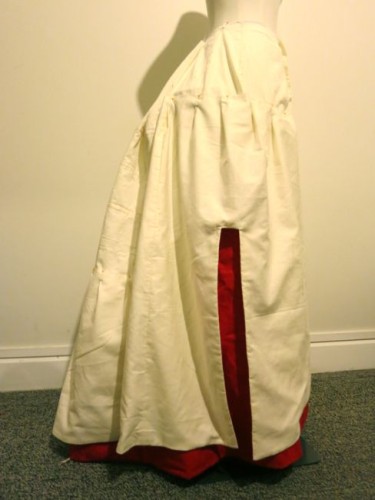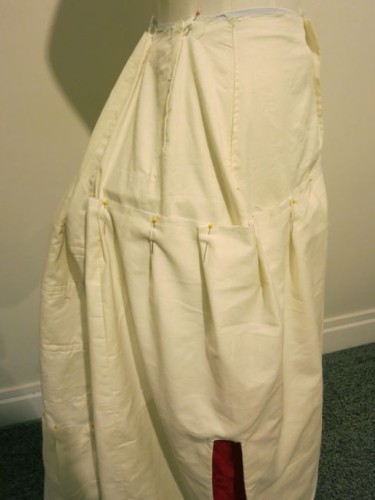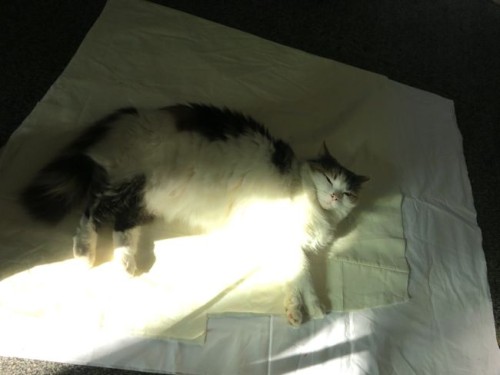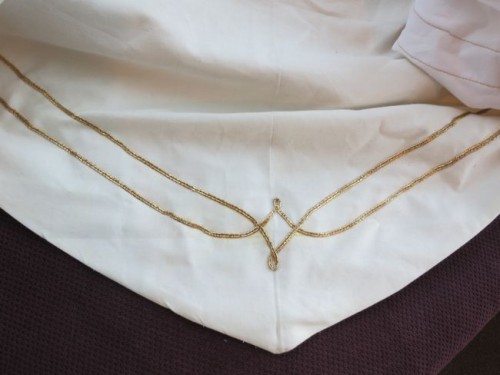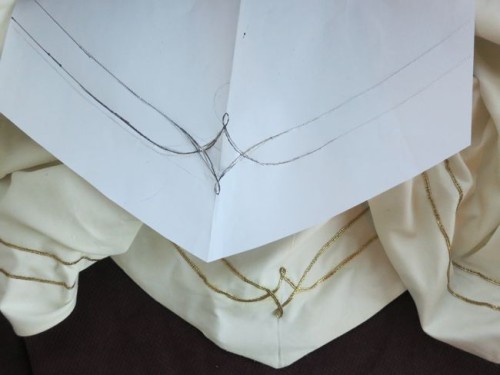I did wonder what you would make of the 1950s Paquin dress last week. I find it emotionally appealing, because it reminds me of those flowers so, and aesthetically not quite as appealing, because it looks exactly like a dress based on those flowers which I would have designed when I was, I don’t know, nine? It’s just so literal. In the end, I was the opposite of Fidelo: I wanted to hate it, but I just couldn’t. I also couldn’t love it though, and so the 7.3 out of 10 that you rated it is just a teeny bit higher than what I would have given it.
I know this fortnight is supposed to be Separates, and I had the perfect Separates ‘Rate the Dress’ all picked out, and now I can’t remember where on earth the link is, and all the other separates I can find seem to be beige and white, and I’m quite sure you’ve all had enough of pale tones for a while, and it’s time for something vivid and colourful!
So today’s Rate the Dress is quite vivid and colourful, and slightly inspired by last week’s Rate the Dress, as the paisley design rather reminds me of sea creatures.
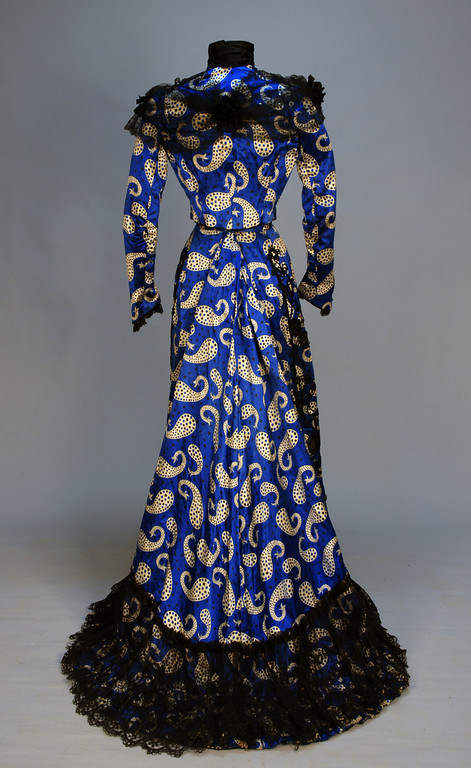
Afternoon dress of printed silk satin, ca 1902, via Whitakers Auctions
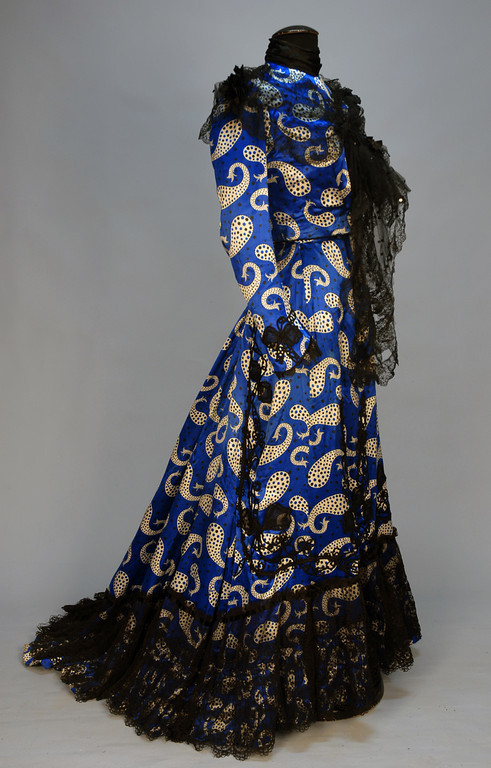
Afternoon dress of printed silk satin, ca 1902, via Whitakers Auctions
The fabric is certainly very bold, and vibrant, and distinctive. It’s also surprisingly modern, which shows that modern isn’t as modern as we think, in some ways!

Afternoon dress of printed silk satin, ca 1902, via Whitakers Auctions
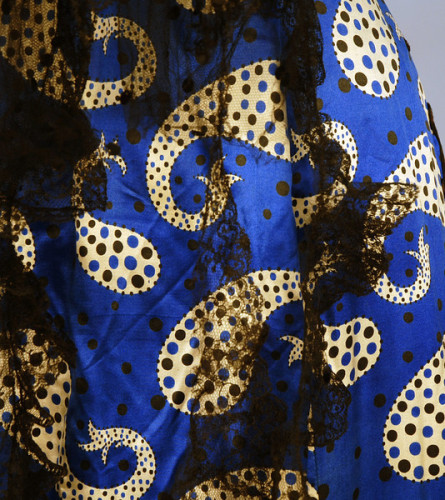
Afternoon dress of printed silk satin (detail), ca 1902, via Whitakers Auctions
Modernity actually seems an apt theme for a dress from the turn of the century. What do you think? Is this the way to blend bold modernity and old fashion femininity, the way to MAKE A STATEMENT in a sea of pastel frocks, or has it missed the mark?
Rate the Dress on a Scale of 1 to 10


